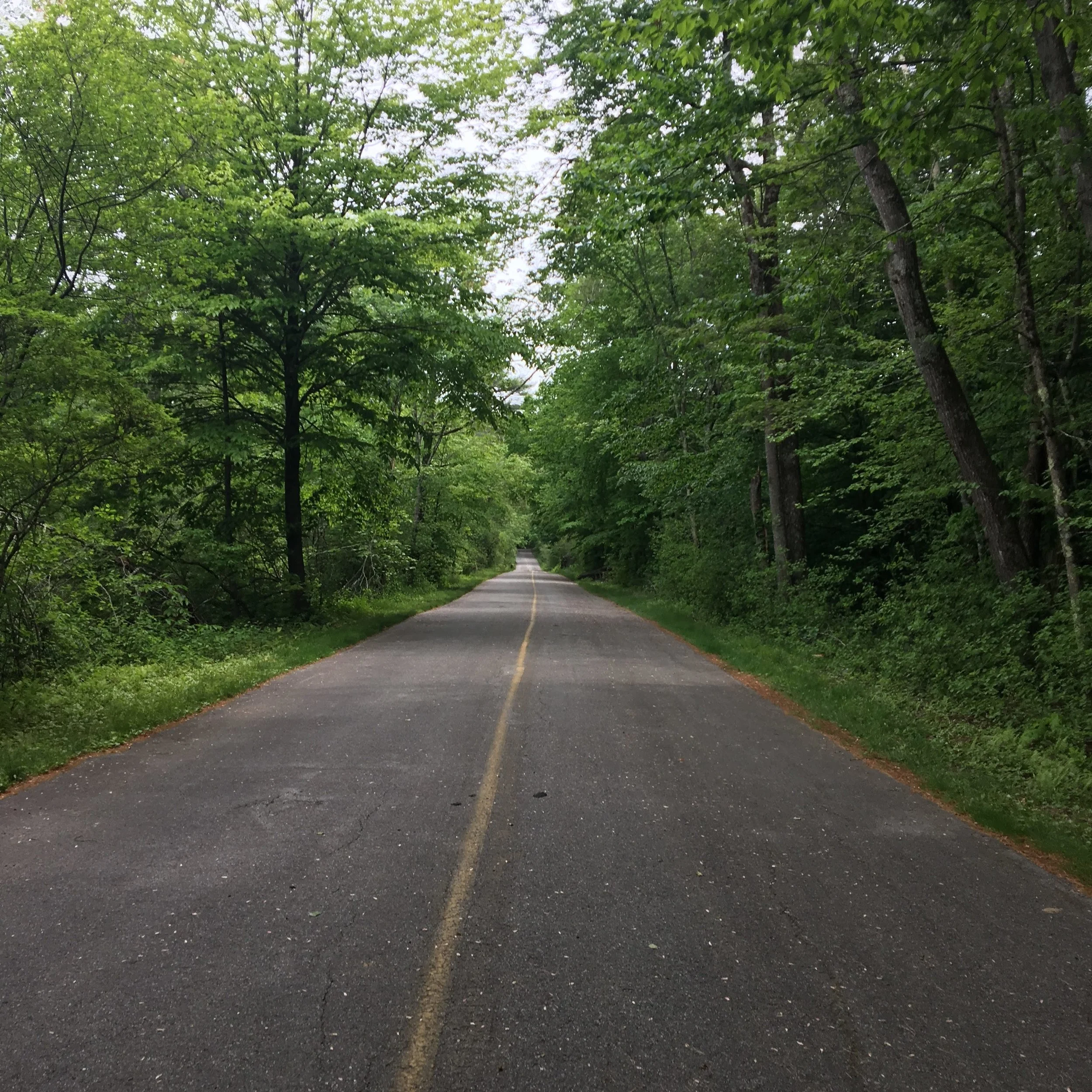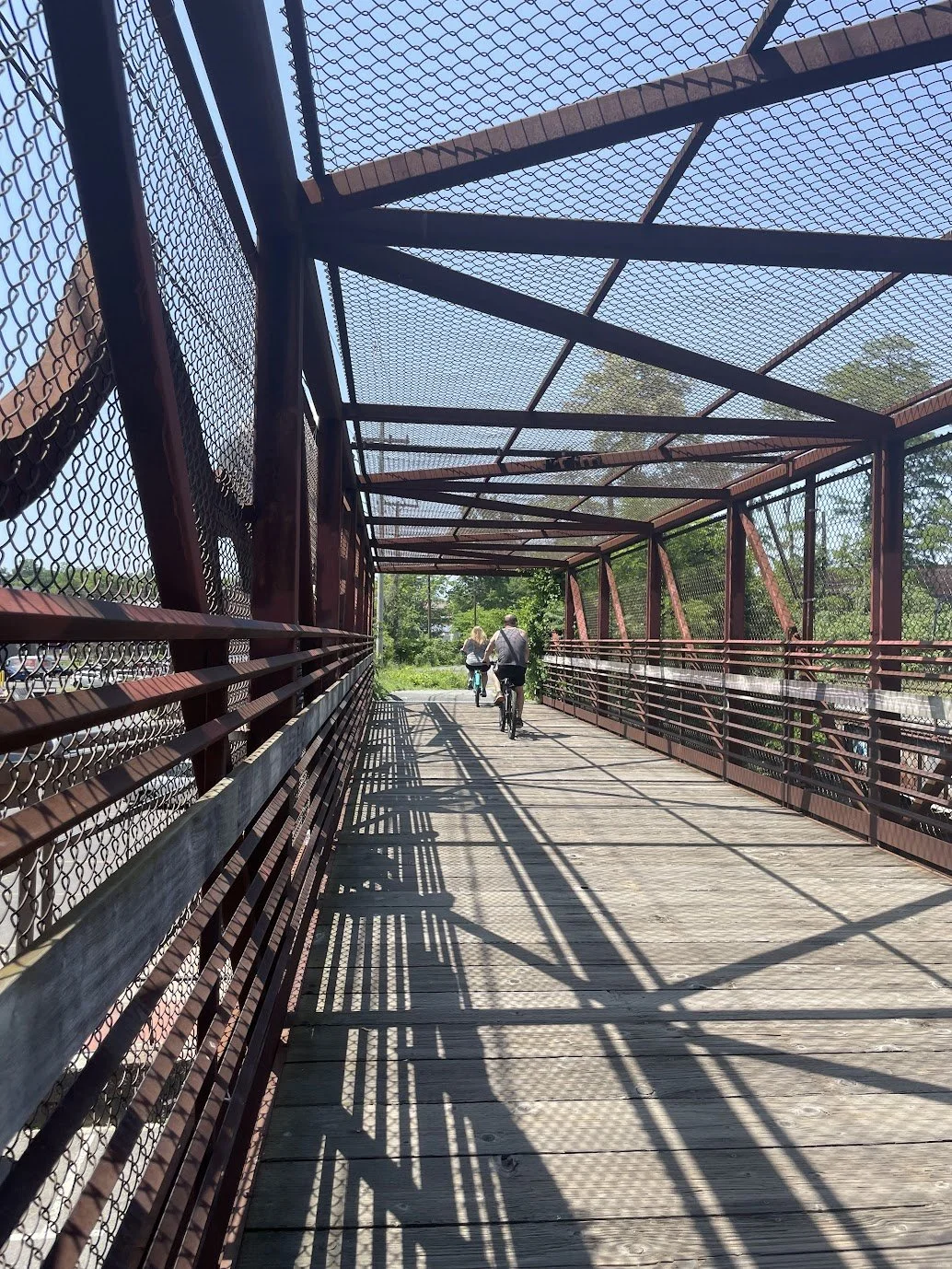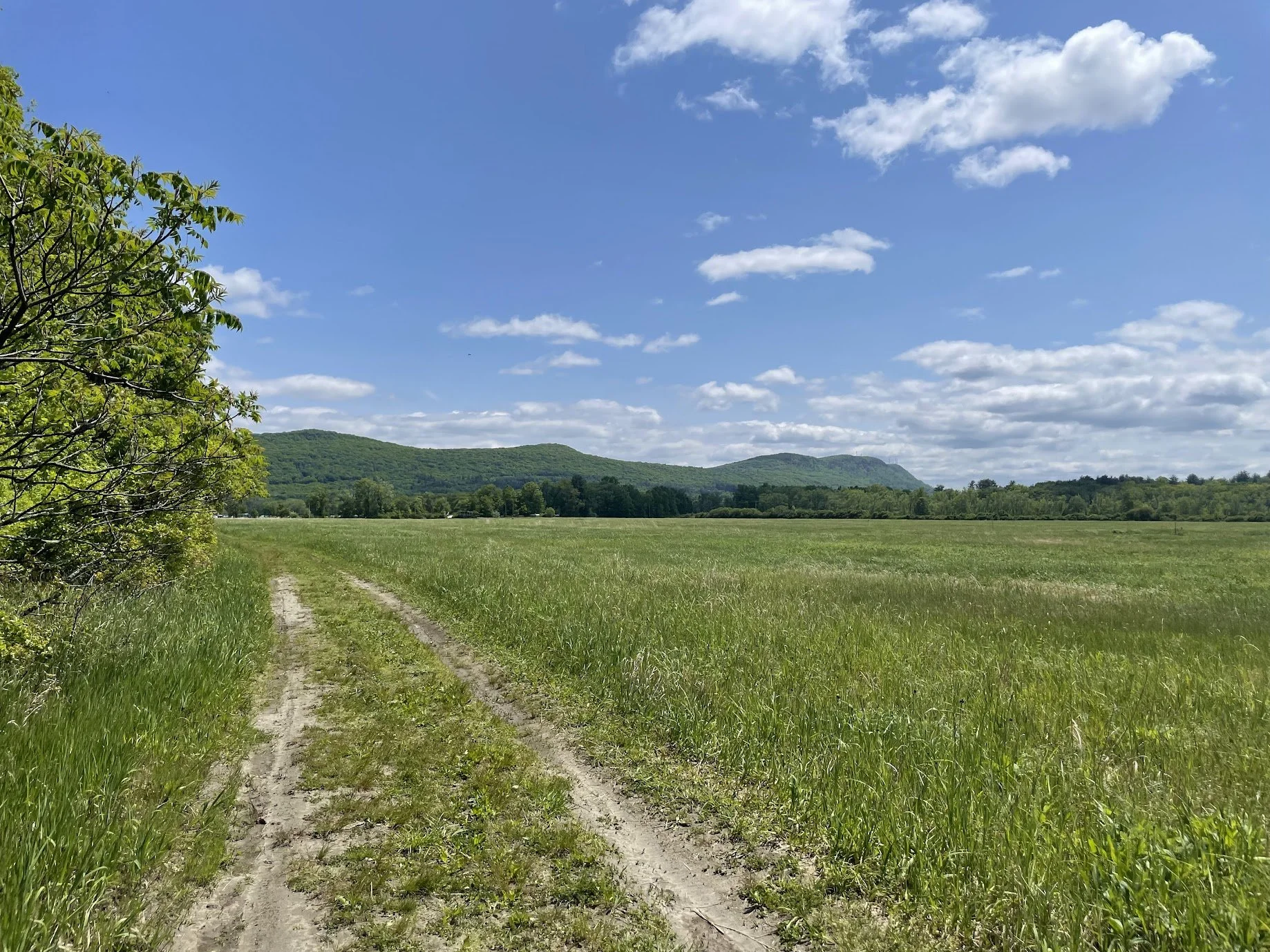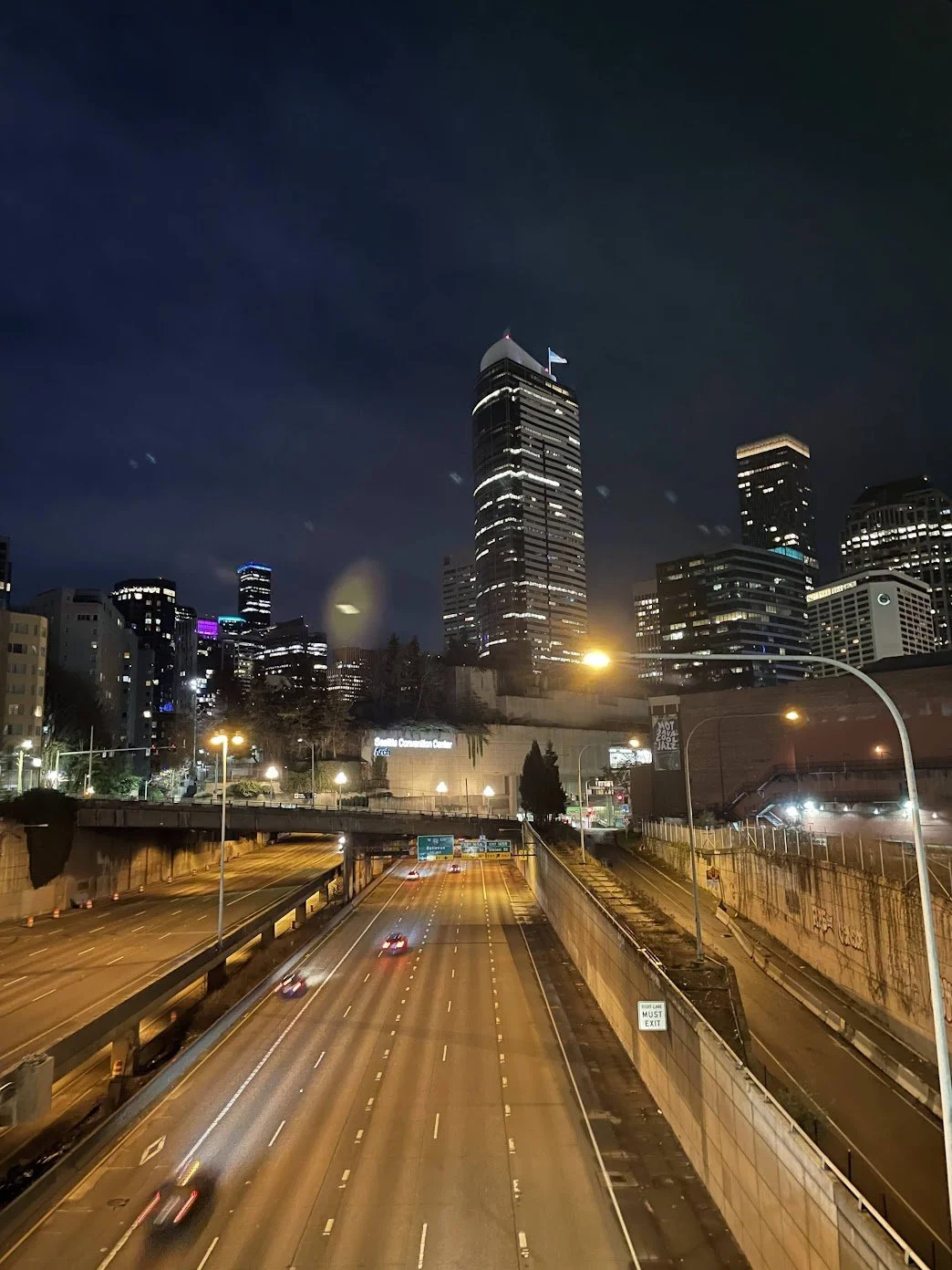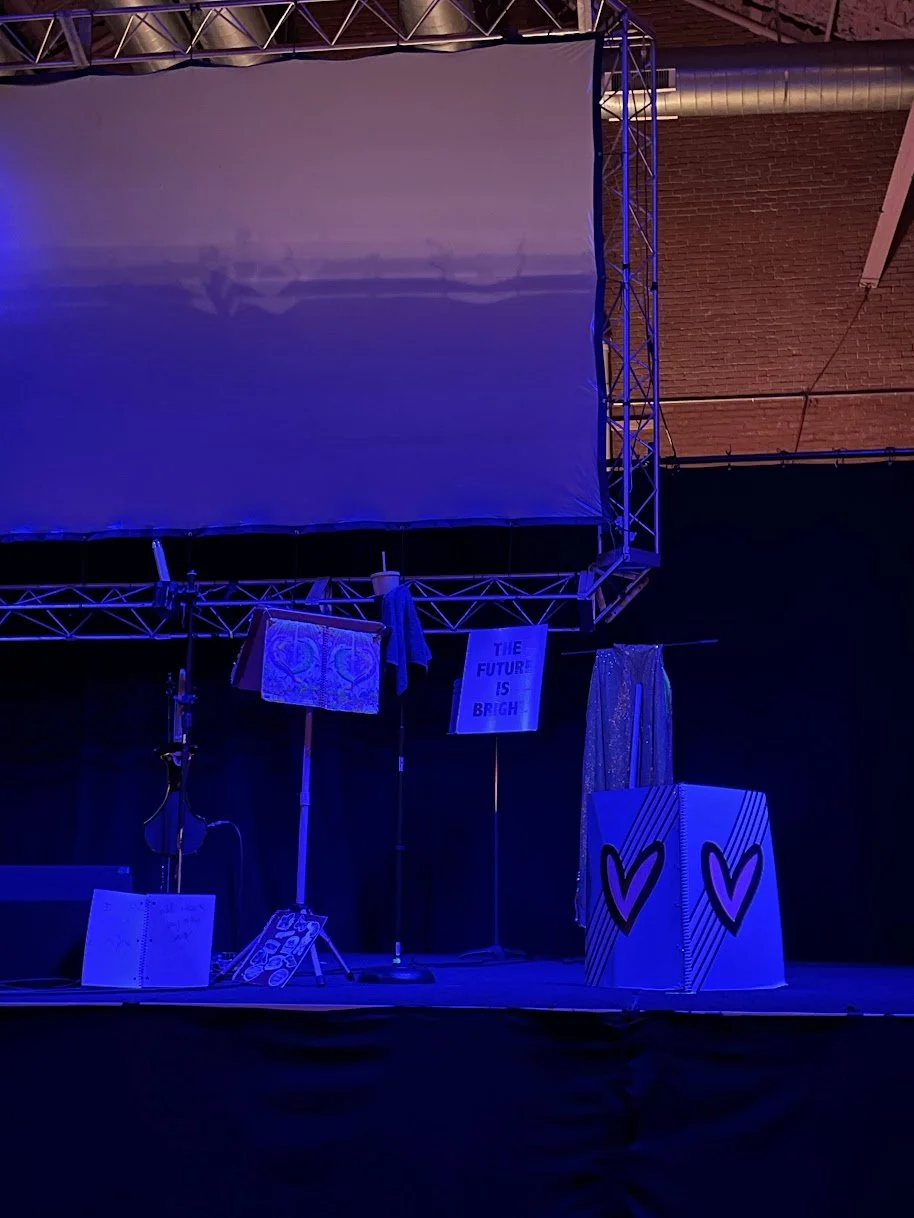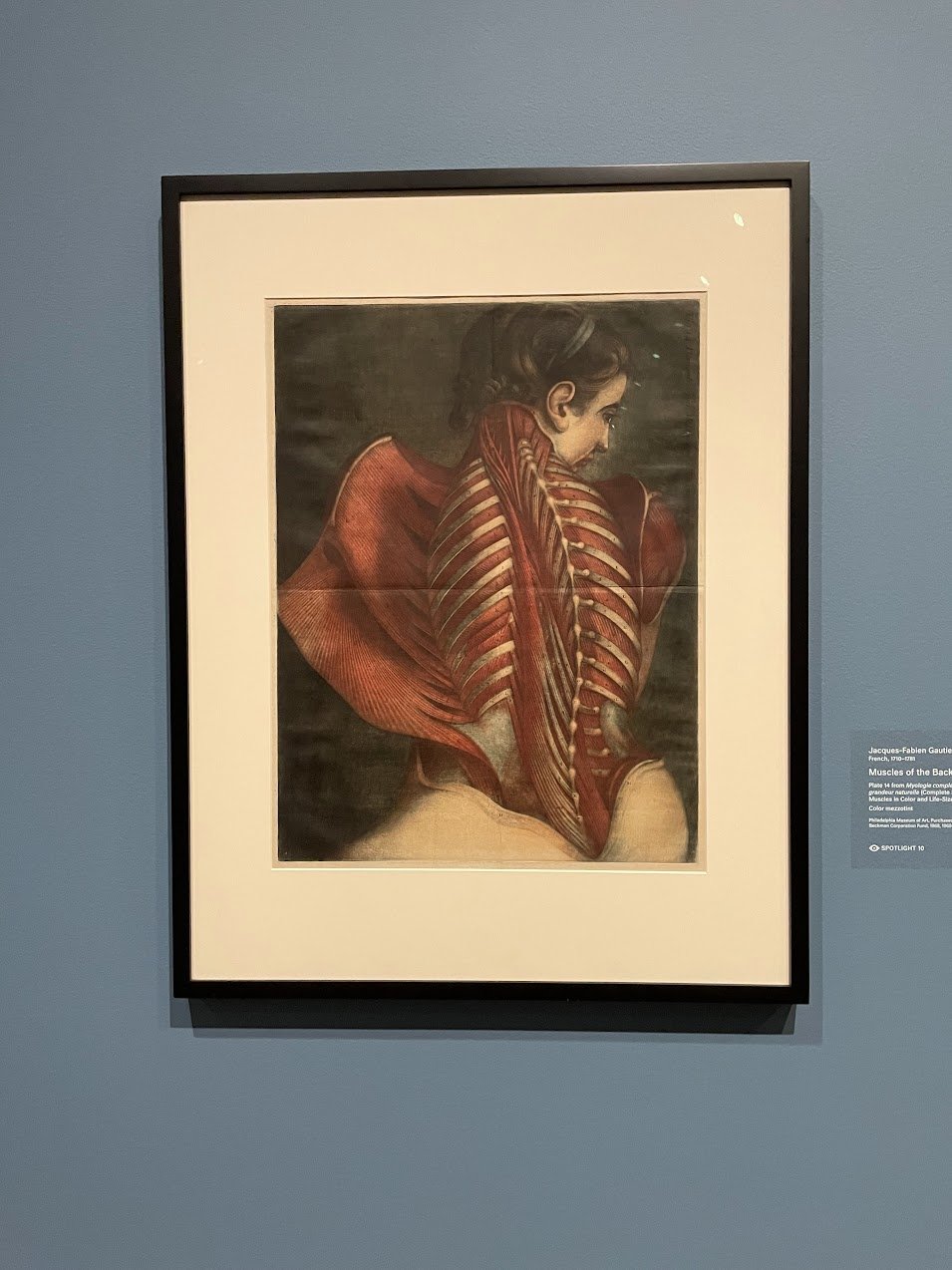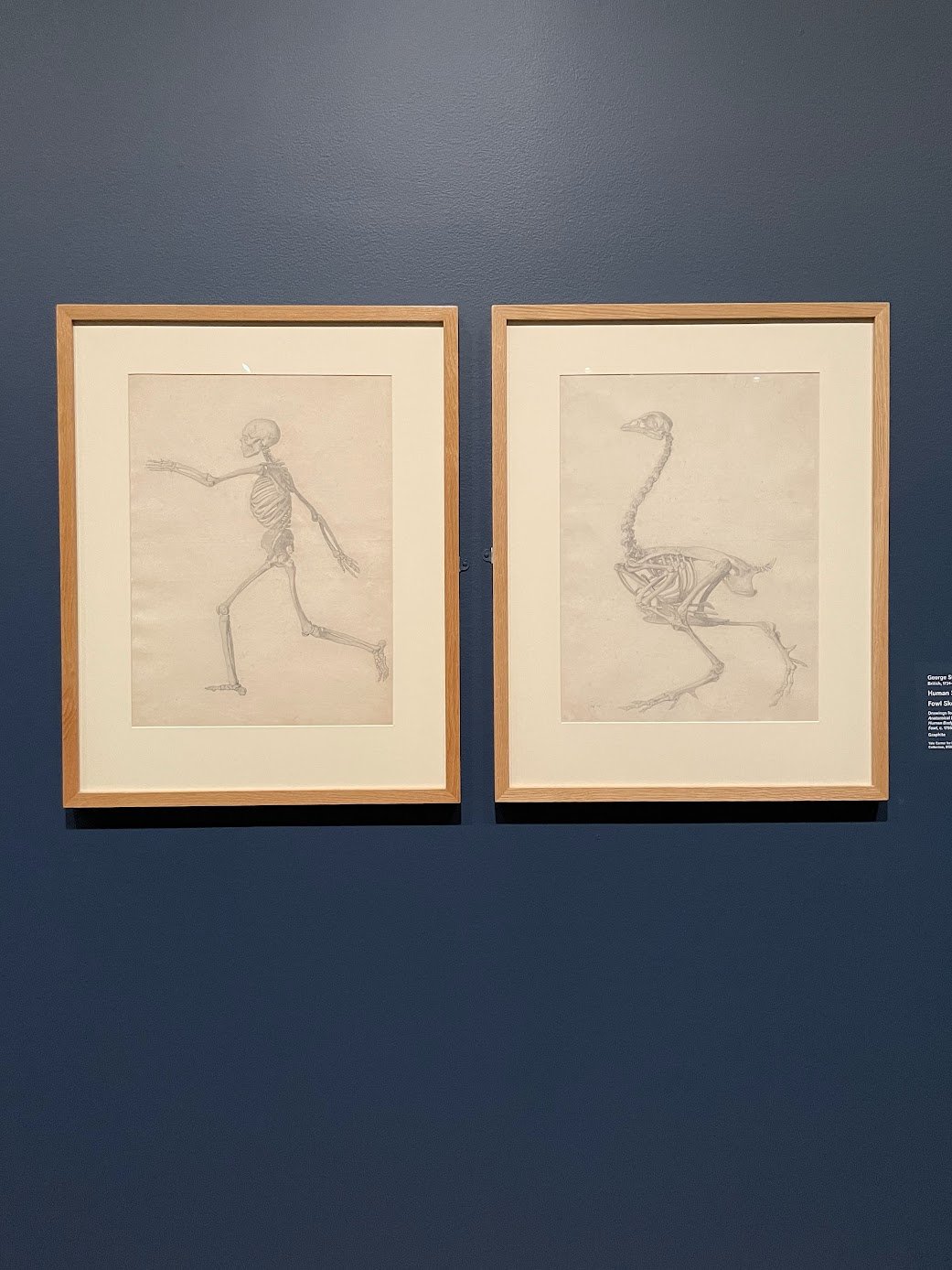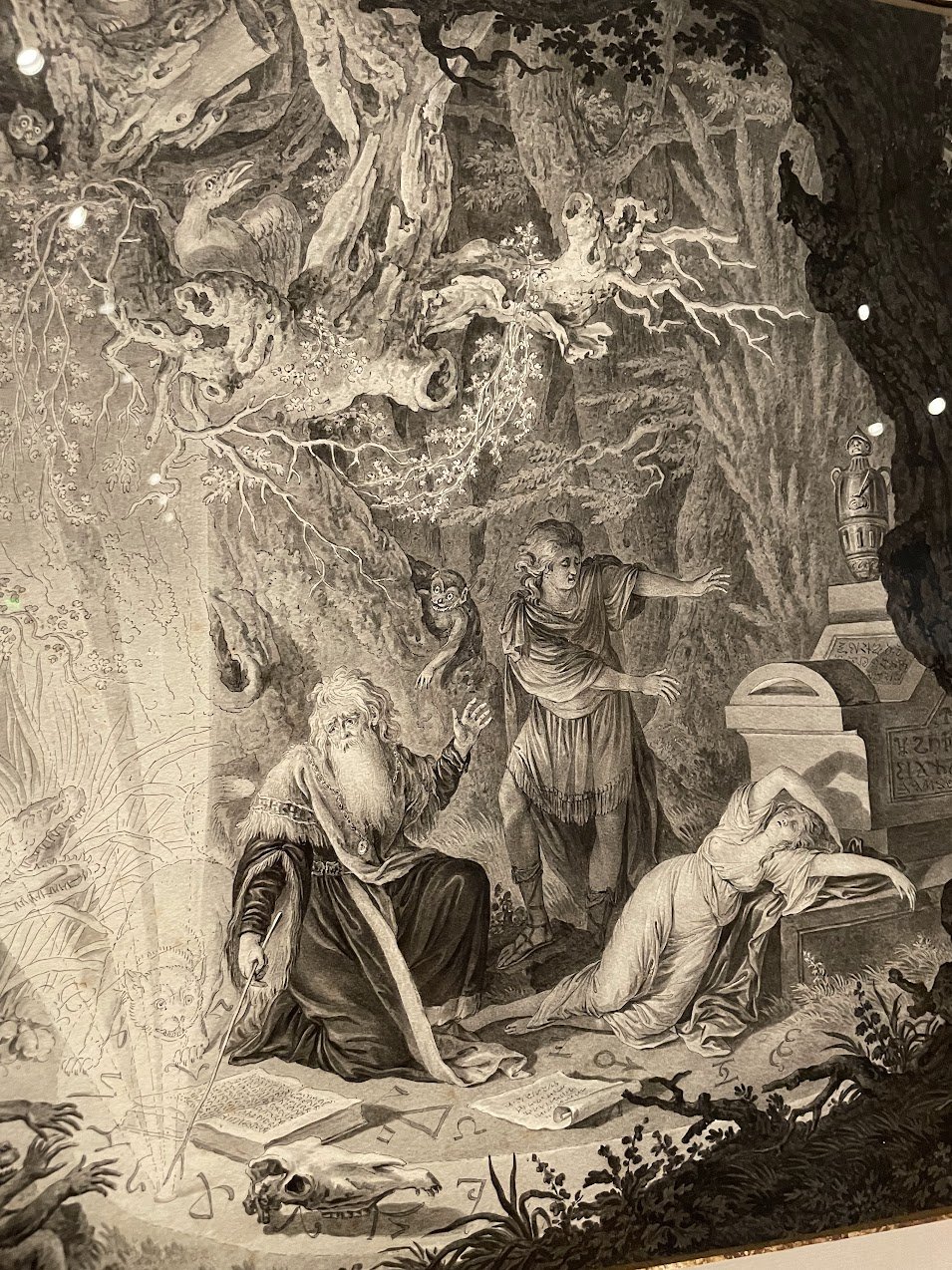I was staying at Hotel Theodore, a hexagon-themed boutique hotel in downtown Seattle that encapsulates what I’d soon come to learn is a certain Seattle preoccupation with old technology. Patents for the Space Needle as art on the wall. Bulb lamps, vintage radio alarm clock, and lights and showers that do not work with a simple switch.
I could not for the life of me figure out how to turn on the light in my hotel room’s bathroom. Nor could I figure out how to turn on the main shower head, only the handheld one! I thought about calling the front desk for help with these things, but I was too proud.
I’d arrived a full day ahead of the conference, figuring I’d have a full day to relax first. But thanks to the 3-hour time difference, I was wide awake at 6 a.m., hungry and restless. So after a handheld shower, I headed out into downtown in search of some breakfast.
I quickly discovered that, like much of the west coast, Seattle doesn’t really care about breakfast. But at least there were a thousand coffee places to choose from. I went to Anchorhead Coffee, where the coffee was so delicious but the vegetarian breakfast sandwich was… one of the stranger things I’ve eaten. But it would hold me over to lunch.
When I’d asked friends about what to do in Seattle, everyone mentioned Pike Place Market, so that’s where I walked first. On a Wednesday morning, the market was quiet and fairly shuttered, but the famed seafood stands were open, so at least I could catch their full whiff and gape at open-mouthed fish and the freakishly long crab legs.
I said hello to the golden pig and went outside to look at the Pacific Ocean. The view was mostly obscured by an incredible amount of coastal construction.
Back out on the street, I noticed a short line forming outside a coffee shop that turned out to be The Original Starbucks. I waited a few minutes to get my usual order. I needed a second coffee anyway, and when in Rome/Seattle?
Original Starbucks in hand, my next mission was to go see The Seattle Great Wheel. In my mind, I thought it’d be something like The Pacific Wheel in Santa Monica.
I sauntered down Alaskan Way, also under heavy construction, stopping at different piers to see if it would be the one that would bring me to The Great Wheel, so tantalizingly close! I soon realized that the only way to get to the wheel was through something called “Miner’s Landing” on Pier 57.
Miner’s Landing is a terrible, terrible place. A tourist trap with unceasing, frantic banjo music, it is like a taxidermy mall from hell celebrating 1800s westward expansion. But determined, I ventured in, passing vacant arcades and seafood restaurants and even a carousel. I got to a stand advertising tickets to ride The Great Wheel. I didn’t want to ride it. I just kinda wanted to see it up close, but I wasn’t going to pay for that. Rats.
So I turned around and walked back up to Pike Place Market, stopping into the Seattle Antiques Market along the way.
I decided to take a shortcut up Post Alley, where I accidentally encountered the famed Seattle Gum Wall. Maybe a used gum wall is not something you should encounter accidentally. I was confused, then amused, then… kinda grossed out, honestly. I held my breath watching a long-haired girl strike poses against the used gum.
Not sure where to go next, I decided maybe I should go try to find the Space Needle? Why not?
Along the route I stopped into a random Hawaiian-Korean fusion place Marination that turned out to be some of the most delicious food I ate while in the city. Even though the sun had disappeared, I ate outside on 6th street with the Space Needle in the distance.
Walking through more construction, I got to the Space Needle and thought, welp, there it is! It’s in a tourist area beside the Chihuly Garden, which Seattle friends had also recommended as a must-see. I’d seen Chihuly’s glass sculptures before at the MFA in Boston, so I wasn’t so gung-ho on the museum. But like with The Original Starbucks, I thought, well, when in Rome/Seattle, and got myself a ticket.
The Chihuly Museum is small but includes some of his most impressive pieces. The real highlight for me was the outdoor garden, where his colorful blown glass pieces featured alongside plants and spring flowers about to bloom. I sat there for a while, watching the birds, the people, and darker clouds roll in over the Space Needle.
Then, suddenly—a downpour! The sun I’d seen for the past six hours had been a fluke, and I wouldn’t see it again for my remaining time in the city.
I walked back to my hotel in the rain. When I got there, I was soaked and shocked that it was only 3pm. So I took a nap.
I woke up restless again and decided to go to a pre-AWP gay poetry off-site event. I took a Lyft to East Pike/Pine (the gay area, maybe? at least there are rainbow crosswalks). I ate a quick dinner at Lost Lake Cafe, where the TVs were playing both Interview With the Vampire and The Hunger (with David Bowie)! I thought, woah, Seattle is serious about their vampires.
I was two minutes late to the gay poetry reading at Queer/Bar, which somehow meant it was already full! The frantic bar employees promised they were “working on it” so I waited with 30 or so people at the bar and grabbed a drink.
Some other AWP folks invited me to another off-site event at The Pine Box. I asked them if it was a gay thing and they said no, so I said I’d rather just stay here with the queers. And I’m glad I did, because I actually had a super fun night watching a drag and burlesque show with some awesome people.
Walking back to the hotel, I encountered a pink neon sign advertising KITTIES. Enticed, I went up to the window and discovered a room full of cats sleeping and playing! Just my luck, I’d stumbled across NEKO Cat Cafe! It was closed, but the kitties were still in there being adorable. Imagine me crouching, pst-pst-pst’ing on the Seattle streets at 12:30 am. Yup, that happened.


